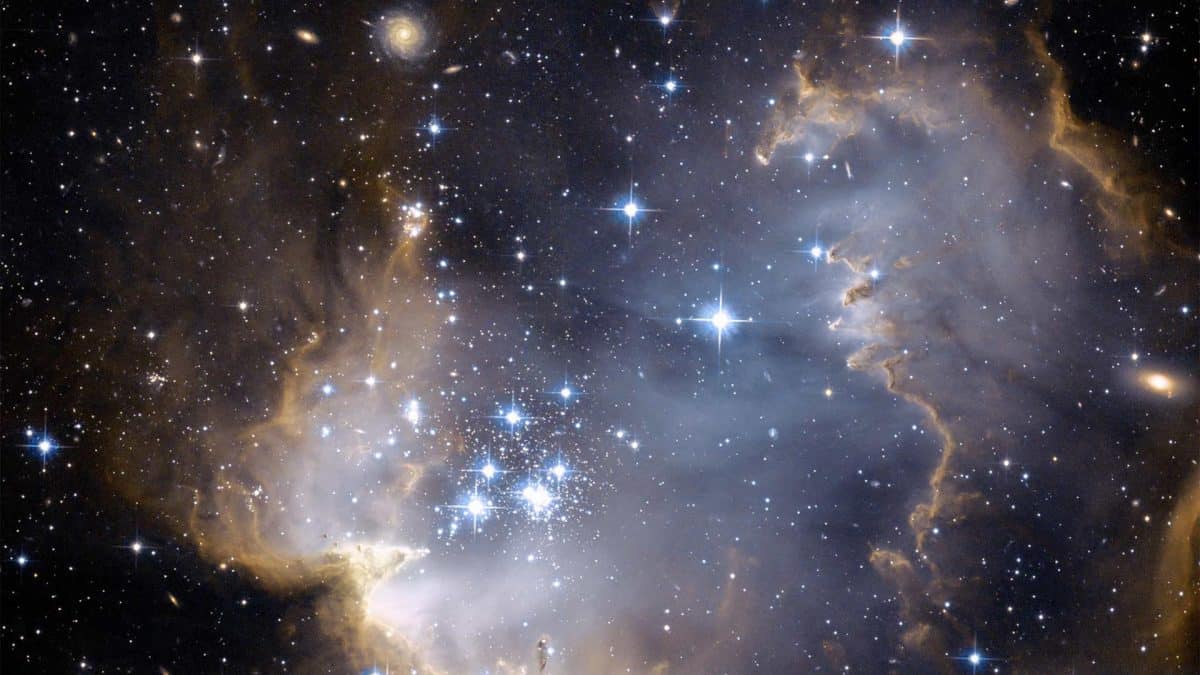The Cosmos with the Small Magellanic Cloud
The Small Magellanic Cloud (SMC), or Nubecula Minor, is a dwarf galaxy near the Milky Way. It is classified as a dwarf irregular galaxy. It has a diameter of about 7,000 light-years, contains several hundred million stars, and has a total mass of approximately 7 billion times the mass of the Sun. The SMC contains a central bar structure and it is speculated that it was once a barred spiral galaxy that was disrupted by the Milky Way to become somewhat irregular. At a distance of about 200,000 light-years, it is one of the Milky Way‘s nearest intergalactic neighbors. It is also one of the most distant objects that can be seen with the naked eye.
The SMC is mostly visible from the Southern Hemisphere though it can be fully glimpsed from near the southern horizon from equatorial latitudes south of about 15° N. It is located across both the constellations of Tucana and part of Hydrus, appearing as a hazy light patch resembling a detached piece of the Milky Way. It covers an average diameter of about 4.2° across (8 times the Moon’s diameter) or 51.7 sq. degrees (about 60 times the apparent area of the Moon.) Since it has a very low surface brightness, the SMC is best seen from a dark site away from city lights. It forms a pair with the Large Magellanic Cloud (LMC), which lies a further 20° to the east, and like the LMC, is a member of the Local Group and highly probably is a satellite of the Milky Way.
